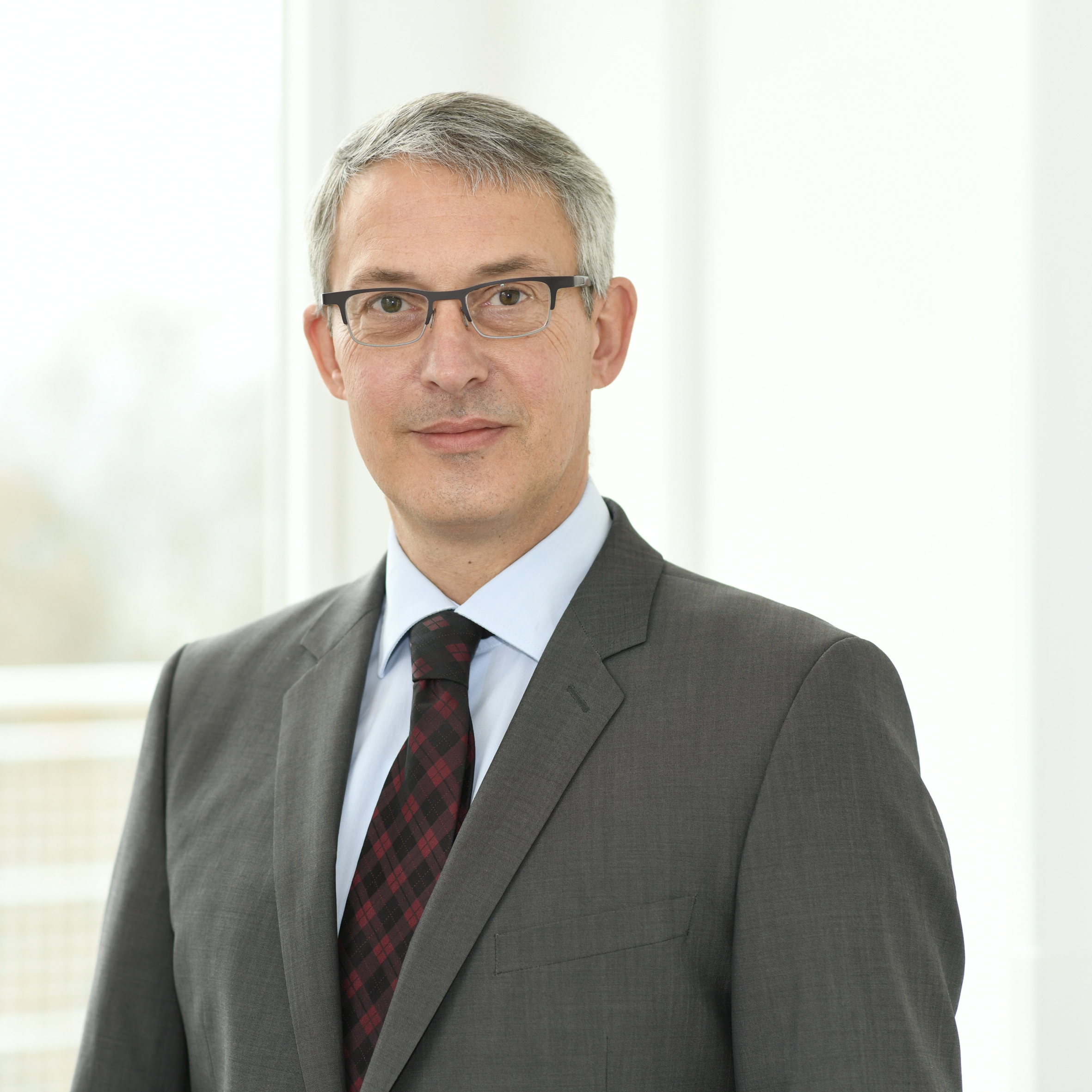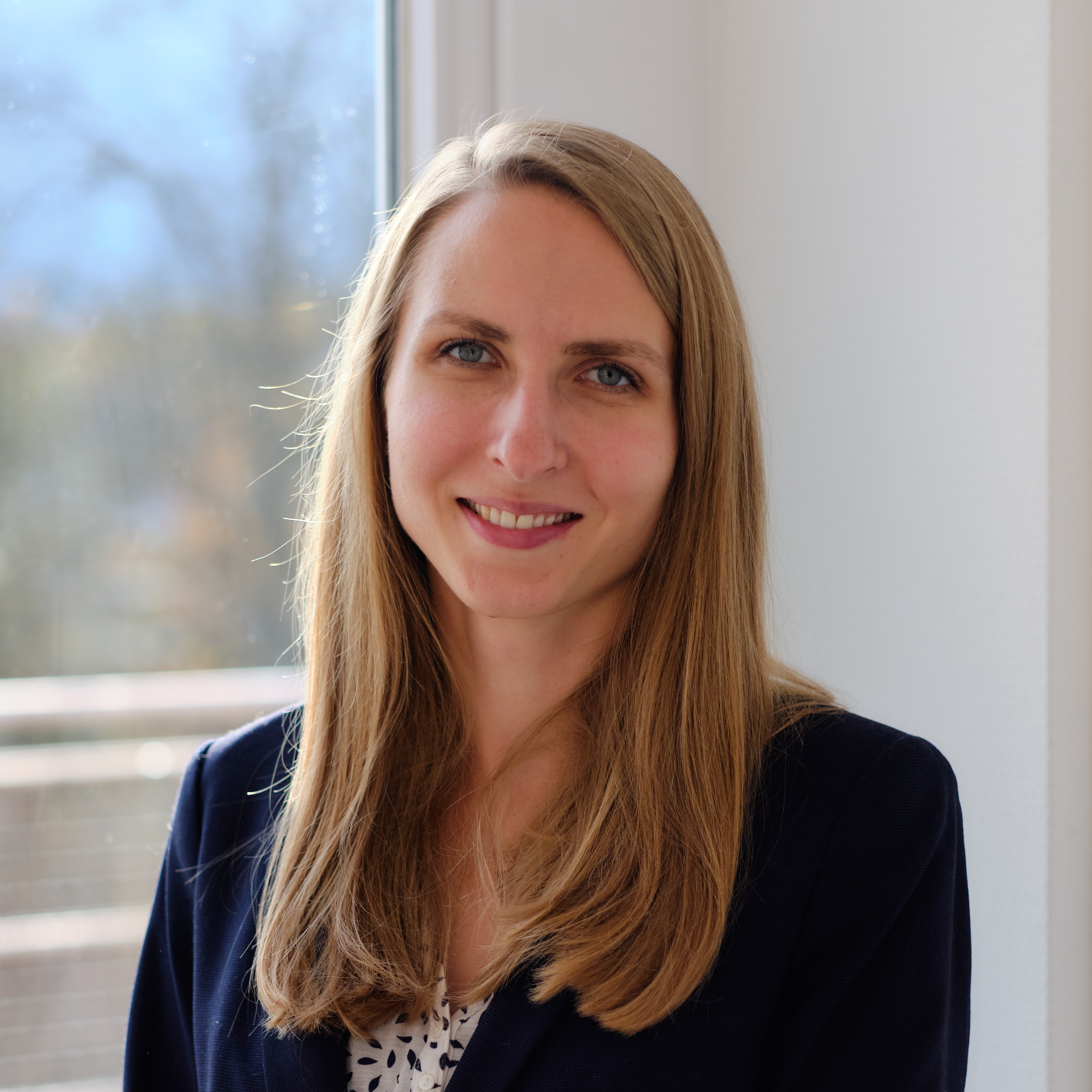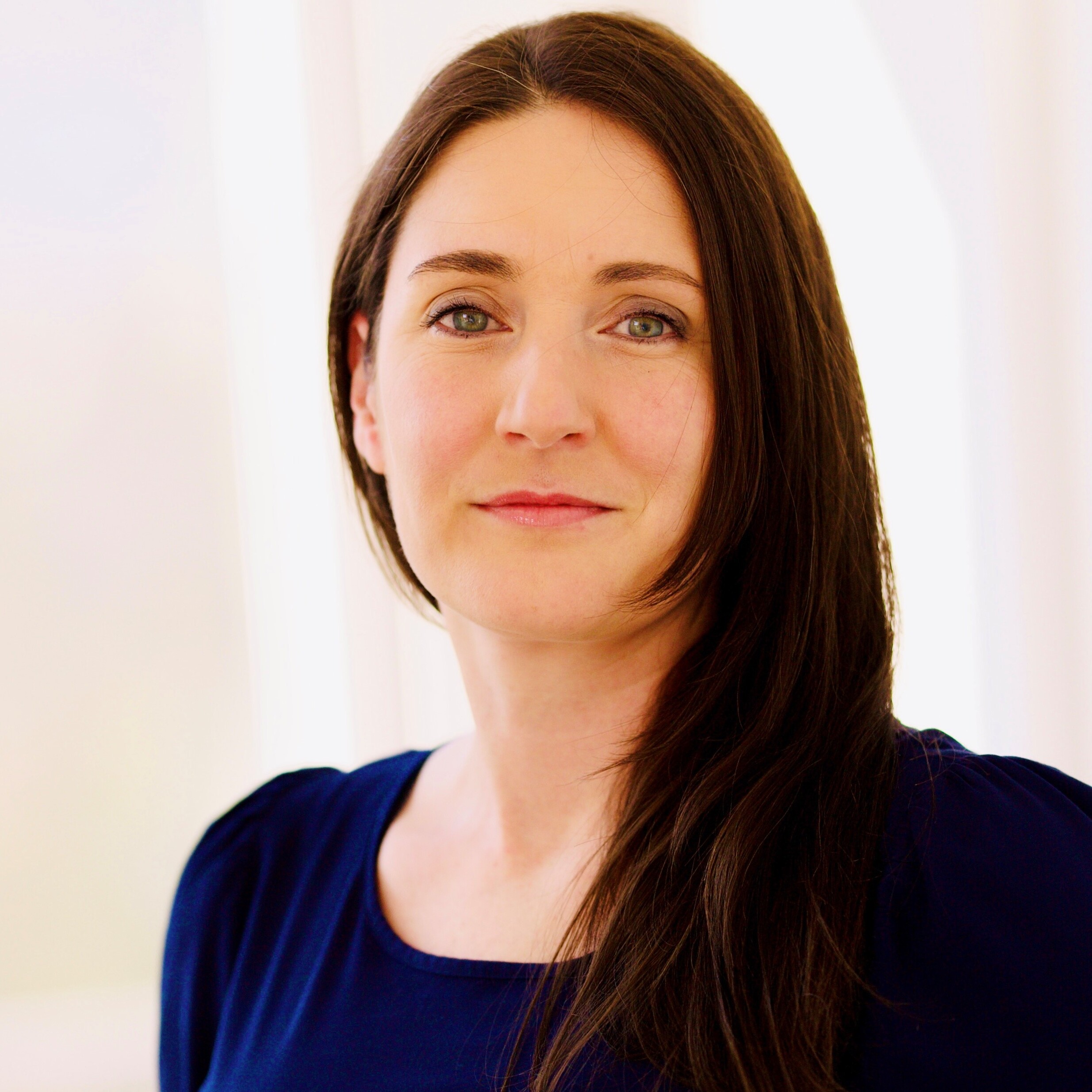Wir sind qualifiziert nach DIN EN ISO 9001:2015
Forschungsinstitut für Frauengesundheit (FFG)
Unter dem Dach des Departments für Frauengesundheit bietet das Forschungsinstitut für Frauengesundheit (FFG) ein innovatives Umfeld mit vielseitigen und interdisziplinären Forschungsthemen für motivierte (Nachwuchs-) Wissenschaftlerinnen und Wissenschaftler und wissenschaftlich engagierten Ärztinnen und Ärzten.


Leitung

Prof. Dr. Andreas Hartkopf
Medizinischer Direktor Forschungsinstitut für Frauengesundheit
Leitung der Sektion konservative Gynäkoonkologie
Publikationen: Publikationen
Personenprofil: Mehr zur Person

Forschungsmanager
E-Mail-Adresse: armin.bauer@med.uni-tuebingen.de

Wissenschaftskoordination
E-Mail-Adresse: lena.mesch@med.uni-tuebingen.de

Leitung Studienzentrale
E-Mail-Adresse: bettina.walter-thorwart@med.uni-tuebingen.de

Dr. rer. nat. André Koch
Laborleiter
E-Mail-Adresse: andre.koch@med.uni-tuebingen.de
Personenprofil: Mehr zur Person
Forschungsschwerpunkte
Die verschiedenen Forschungsaktivitäten des FFGs ergänzen sich in ihrem Beitrag zur Förderung der Frauengesundheit und gleichzeitig zur Funktion des Instituts als Dreh- und Angelpunkt für Translations- und Implementierungsforschung. An der Seite der Universitäts-Frauenklinik hat das Forschungsinstitut eine Schlüsselrolle. So wird der Prozess der zeitnahen Umsetzung von Forschung und Anwendung in der Versorgung unserer Patientinnen immer wichtiger.
Die Forschungsschwerpunkte des FFG erstrecken sich über alle Fachgebiete der Frauengesundheit:
Fetalmedizin, Perinatologie, experimentelle Senologie, experimentelle Gynäko-Onkologie, translationale Onkologie, Medizintechnik, innovative Operationsmethoden, Urogynäkologie, Endokrinologie, Reproduktion, Versorgungsforschung, Fehlbildungen, Regenerative Medizin sowie Molekulare Gynäkologie.
Von Grundlagenforschungsprojekten bis hin zu Klinischen Studien werden hier alle Phasen der biomedizinischen Forschung durchgeführt.
Translationale Onkologie
3D-Kulturmodelle/Organoide
Zielsetzung (Focus of Research)
Ziel unserer Arbeitsgruppe ist die Herstellung patientenabgeleiteter 3D-Kulturmodelle (‘Organoide‘) von Tumor- und Normalgewebe. Im Fokus stehen hier sowohl die molekulare Charakterisierung dieser Modelle als auch die Entwicklung von neuen Testverfahren für die Vorhersage für das Therapieansprechen. Mit Hilfe dieser Modelle und Methodenentwicklung versuchen wir dem Ziel einer individualisierten und maßgeschneiderten Therapie ein Stück näher zu kommen.
Goal of our research is the establishment of patient-derived 3D culture models (‘organoids’) of tumour and healthy tissue. Our focus lies on the molecular characterization of such models as well as the development of new protocols for drug efficacy testing for predicting therapy response. With the help of these models and protocols we hope to get a step closer to an individualized and patient tailored therapy regimen.
Expertise, equipment and methods
Expertise:
Our lab has a longstanding expertise in 2D cell culture, cell cycle analysis and live cell imaging. Recently we have included 3D culture methods to our repertoire.
Methods:
qPCR, western blot, in vitro kinase assays, cell cycle analysis by time-lapse live cell imaging, CRISPR/Cas9-knockout and targeted mutagenesis, single cell isolation by micromanipulation for tumour cells from blood and bone marrow, immune(histo)(cyto)chemistry, immunofluorescence.
Equipment:
IX83 fluorescence microscope, iBright Western Blot detection, Quantstudio 5 qPCR, ParSortix cell separation system, CELLSEARCH
Kooperationspartner
- Prof. Dr. Peter Loskill
Forschungsinstitut für Frauengesundheit
Silcherstr. 7/1, 72076 Tübingen
Karriere
Wir sind immer auf der Suche nach talentierten und hochmotivierten Jungforschern/innen, die sich in unserer Arbeitsgruppe engagieren wollen! Interessenten für
Doktor- und Masterarbeiten werden gebeten sich per E-Mail an Dr. André Koch zu wenden.
Leitung

Dr. rer. nat. André Koch
Leitung
Personenprofil: Researchgate
E-Mail-Adresse: Andre.Koch@med.uni-tuebingen.de
Tumorzelldissemination
Schwerpunkt
Die Arbeitsgruppe der translationalen Onkologie beschäftigt mit folgenden Schwerpunkten:
- Prognostische Relevanz von zirkulierenden Tumorzellen (CTCs), disseminierten Tumorzellen (DTCs) und Tumor DNA
- Translationale Tumorimmunologie - Entwicklung von Peptidvakzinen für Tumorerkrankungen
Expertise, Ausstattung, Methodenspektrum
Detektion und Charakterisierung von epithelialen Tumorzellen aus Knochemarkspunktaten
Detektion und Charakterisierung von epithelialen Tumorzellen aus peripherem Blut
In Einzelfällen Heilversuche bei Patientinnen mit Ovarialkarzinomen
Kooperationspartner
- Prof. Dr. Christoph Klein
Experimental Medicine and Therapy Research
University of Regensburg
Franz-Josef-Strauß-Allee 11, 93053 Regensburg - Fraunhofer Project Group
Personalized Tumor Therapy
ITEM Regensburg
Josef-Engert Str. 9, 93053 Regensburg - Prof. Dr. Tanja Fehm
Universitäts-Frauenklinik Düsseldorf
Moorenstraße 5, 40225 Düsseldorf - Prof. Dr. Wolfgang Janni
Universitäts-Frauenklinik Ulm
Albert-Einstein-Allee 23, 89081 Ulm - Professor Dr. A. Schneeweiss, PD Dr. Markus Wallwiener
NCT Heidelberg
Im Neuenheimer Feld 460, 69120 Heidelberg - Prof. Dr. Hans-Georg Rammensee,
Interfakultäres Institut für Zellbiologie/ Abteilung für Immunologie,
Universität Tübingen, Deutschland - PD. Dr. Annette Staebler,
Institut für Pathologie/ Abteilung für gynäkologische Pathologie,
Universitätsklinikum Tübingen
Leitung

Prof. Andreas Hartkopf
Medizinischer Direktor Forschungsinstitut für Frauengesundheit
Leitung der Sektion konservative Gynäkoonkologie
Personenprofil: Mehr zur Person
Regenerative Medizin und Frauengesundheit und Genderforschung
Regenerative Medizin
Schwerpunkt
Die Arbeitsgruppe um Prof. Katja Schenke-Layland erforscht vielfältige Fragestellung rundum das Thema „Medizintechnik und Regenerative Medizin“. Unter Anderem liegen die Forschungsschwerpunkte auf dem Einsatz und der Weiterentwicklung optischer Technologien wie beispielsweise der Raman Mikrospektroskopie, Multiphotonen-induzierte Autofluoreszenz Mikroskopie und Second Harmonic Generation (SHG) als nicht-invasive Methoden zur Darstellung zellulärer und extrazellulärer Gewebestrukturen, sowie auf der Entwicklung neuer Biomaterialien und Bioreaktorsysteme für die Zell- und Gewebekultur. Wir greifen dabei auf eine langjährige Expertise in der Etablierung zwei- (2D) und dreidimensionaler (3D) in vitro Stammzellkultursysteme unter Verwendung adulter und pluripotenter Stammzelltechnologien zurück. Eine weitere Kompetenz ist in der Analyse von Proteinen und Strukturen der extrazellulärer Matrix (ECM), auf deren Basis neuartige Trägersubstrate für den Einsatz in der regenerativen Medizin entwickelt werden.
Expertise, Ausstattung, Methodenspektrum
Etablierung von 2D und 3D In vitro Stammzellkultursystemen unter Verwendung adulter und embryonaler Stammzelltechnologien.
Analyse von ECM Proteinen und Strukturen unter Verwendung minimal-invasiver Mikroskopietechnologien.
Entwicklung spezifischer Systeme für die Lagerung und Aufbewahrung von Geweben und Organen.
Design und die Entwicklung neuartiger Biomaterialien für den Einsatz in der regenerativen medizinischen Forschung.
Core Facility:
Kooperationspartner

NMI Naturwissenschaftliches und Medizinisches Institut an der Universität Tübingen
- University of California Los Angeles (UCLA), LA, USA
- University of Southern California (USA), USA
- National University of Ireland (NUI), Galway, Ireland
- Royal College of Surgeons in Ireland (RCSI), Dublin, Ireland
Leitung

Koordination
Simone Liebscher
Diana Holzer
Frauengesundheit und Genderforschung
Schwerpunkt
Zu den Schwerpunktthemen zählen die Versorgungsforschung zu Schwangerschaft und Geburt, mit einer besonders langen Tradition, sowie die gestaltende Versorgungsforschung, beispielsweise für Betroffene mit einer Seltenen Erkrankung, speziell mit einer Seltenen Genitalen Fehlbildung, in Zusammenarbeit mit dem Zentrum für Seltene Genitale Fehbildungen der Frau (ZSGF). Verschiedene Projekte richten sich auf das Problemfeld Demographic Change Management und Frauengesundheit, u.a. vor dem Hintergrund eines wachsenden Pflegebedarfs in der Gesellschaft. Die grenzüberschreitende Gesundheitsversorgung, Qualitäts- und Gesundheitssystemforschung, beispielsweise in der Senologie, sind weitere Themen- und Projektbereiche. Geschlechtsspezifische Aspekte in der Medizin finden u.a. Niederschlag in der Kommunikation und bedürfen zukünftiger Berücksichtigung in Unterstützungs- und Informationsstrategien, die Grundlagen hierzu sind Gegenstand aktueller Forschungsvorhaben. Das Anliegen der Förderung von Gesundheitskompetenz findet u.a. Niederschlag in Projekten, welche die Nutzung neuer Technologien zur Gesundheitsförderung im Blick haben, z.B. im Bereich von Schwangerschaft und Geburt oder in der tertiären Prävention.
Expertise, Ausstattung, Methodenspektrum
In der Arbeitsgruppe ist interdisziplinäre Expertise vorgehalten: Frauenheilkunde, Chirurgie, Psychologie, Neuropsychologie, Experimentalpsychologie und Hirnforschung, Soziologie, Historie.
Außerdem besteht Expertise, wie sie für viele Felder der Versorgungsforschung im Besonderen benötig ist, hinsichtlich Gesundheitssystemkompetenz, auch für internationale Vergleiche, Sozialmedizin, Public Health, Öffentliches Gesundheitswesen, (Sozial-)Versicherungsmedizin sowie Rehabilitation.
Kooperationspartner
- Universität Trier, Lehrstuhl für Wirtschafts- und Sozialstatistik
- Universität Regensburg
- Universität Ulm
- Universität Düsseldorf
- Universität Heidelberg
- Universität Wien, Österreich
- Universität Basel, Schweiz
- Universität Genf, Schweiz
- Universität Lausanne, Schweiz
- Democritus Universität Thrace, Griechenland
- Universität Thessaloniki, Griechenland
- Universität Brescia, Italien
- Universität Padova, Italien
- Universität Trento, Italien
- Universität Poitiers, Frankreich
- Universitäts Istanbul, Türkei
Projektabschlussberichte
Leitung
Prof. Dr. E. Simoes
Leitung
Genitale Fehlbildungen und Reproduktion
Genitale Fehlbildungen
Schwerpunkt
Die Forschergruppe um Prof. Dr. Sara Brucker und PD Dr. Katharina Rall beschäftigt sich mit der Kinder- und Jugendgynäkologie mit besonderem Schwerpunkt auf genitalen Fehlbildungen. Die Patientinnenversorgung findet in einem interdisziplinären ExpertInnenteam mit jahrelanger Erfahrung statt. Die Forschung umfasst das gesamte Spektrum von der Klinik bis in die Grundlagenforschung.
Laufende Projekte
- (epi)genetische Ursachen genitaler Fehlbildungen
- funktionelle Untersuchung von Hormonrezeptoren an Uterusrudimenten von MRKH-Patientinnen
- Klassifizierbarkeit genitaler Fehlbildungen im klinischen Alltag
- die psychologische Seite und ihre Auswirkungen bei genitalen Fehlbildungen
- Optimierung der operativen Therapie bei genitalen Fehlbildungen
- Versorgungsforschung bei seltenen genitalen Fehlbildungen
etc.
Expertise, Ausstattung, Methodenspektrum
Klinisch
- Zertifikat zur Durchführung kinder- und jugendgynäkologischer Sprechstunden
- psychosomatische Mitbetreuung der Patientinnen mit genitalen Fehlbildungen
- Entwicklung einer optimierten Methode zur laparoskopisch-assistierten Neovagina-Anlage
Grundlagenforschung
- funktionelle Untersuchungen an primären Zellkulturen (Endo- und Myometrium)
- qRT-PCR, ELISA, Westernblot
- Array-basierte Verfahren, Sequenzierungen in Koop. mit Medizinischer Genetik
- Histologie und Immunhistochemie in Kooperation mit Pathologie
Kooperationspartner
- Med. Genetik, Pathologie, Psychosomatik, Kinderchirurgie, Radiologie, Universitätsklinikum Tübingen
- CEGAT
- Genetik Münster (Prof. Wieacker)
- Frauenklinik Erlangen (Prof. Beckmann, PD Strick)
- Genetik Genf (Prof. Antonarakis)
- Baylor College of Medicine, Houston, Texas, USA
Leitung


Koordination
Prof. Seeger, S. Hofmeister
Reproduktion
Schwerpunkt
- Einfluss von systemischen Erkrankungen auf die ovarielle Reserve / Fertilitätserhalt
- Individualisierung der Kindwunschtherapie
Kooperationspartner
- Physiologisches Institut, Eberhard-Karls-Universität Tübingen
- Urologische Klinik, Universitätsklinikum Tübingen
- Netzwerk Fertiprotekt
- Dr. Margarete Fischer-Bosch - Institut für Klinische Pharmakologie, Stuttgart
- Medizinische Klinik, Universitätsklinikum Tübingen
- Institut für Medizinische Genetik, Universitätsklinikum Tübingen
- Kinderklinik, Universitätsklinikum Tübingen
Leitung

Urogynäkologie und Onkologische Endokrinologie
Urogynäkologie
Schwerpunkt
- Grundlagenforschung der pathophysiologischen Zusammenhänge des weiblichen Beckenboden zur Entwicklung neuer Therapieoptionen, in Kooperation mit dem Institut für Klinische Anatomie, der Radiologischen Universitätsklinik und der Pelvic Floor Research Group der Unitersity of Michigan, Ann Arbor, MI, USA
- klinische Forschung zur Qualitätssicherung und Etablierung unterschiedlichster OP-Methoden
Expertise, Ausstattung, Methodenspektrum
- Anatomie des weiblichen Beckenbodens
- Morphologie der glatten Muskulatur des Lig. Sacrouterinum
- Kernspintomographische Morphologie des weiblichen Beckenbodens
- Einflüsse von Schwangerschaft und Geburt auf den weiblichen Beckenoden
- Umfassende Fistelchirurgie
- Klinische Expertise auf allen Formen der Beckenbodenrekonstruktionen
- Einsatz von Fremdmaterialien
- Analyse unterschiedlicher OP-Methoden (Sakropexie, TVT, Kolpkleisis, Anlage von suprapubischen Kathetern, sakrale
Neuromodulation, Implantation von artifiziellen Sphinkteren) - Leitlinienerstellung
- Patienten Aufklärungsbögen
Kooperationspartner
- Institut für Klinische Anatomie Tübingen
- Institut für Radiologie Tübingen
Leitung

Onkologische Endokrinologie
Schwerpunkt
Steroidhormone wie Estrogene (E) und Progesteron (P4) spielen über die Bindung an ihre Rezeptoren ER (Östrogenrezeptor) und PR (Progesteronrezeptor) bei der Entwicklung der Brust sowie bei der Entstehung des Mammakarzinoms eine bedeutende Rolle. Über sie werden Signale aktiviert, die das Wachstum von Epithelzellen stimulieren. Die Frage, ob die Zugabe eines synthetischen Gestagens zur Hormontherapie (HT) während der Postmenopause das Risiko für die Entstehung eines Mammakarzinoms erhöht, wird derzeit kontrovers diskutiert.
Sowohl in in vitro- als auch in in vivo-Studien konnten zeigen, dass die Progesteronrezeptor-Membrankomponente-1 (PGRMC1) in Abhänigigkeit des Östrogenrezeptors a (ERa) proliferative Eigenschaften auf Mammakarzinomzellen vermittelt und somit an der Tumorgenese beteiligt sein könnte. Dies ist gerade in Bezug auf in klinischen Studien beobachtete, erhöhte Brustkrebsraten während einer gestagenhaltigen, postmenopausalen Hormontherapie (HT) von immenser Bedeutung. Der Mechanismus, unter welchen Bedingungen (bestimmte?) Gestagene offensichtlich einen proliferativen Effekt auf Mammakarzinomzellen ausüben können, ist noch unbekannt. Prospektive Beobachtungsstudien deuten darufhin, dass das Brustkrebs-Risiko von der Wahl der Gestagenkomponente abhängt.
Expertise, Ausstattung, Methodenspektrum
Klinisch
- Hormontherapie in der Postmenopause
Grundlagenforschung
- funktionelle Untersuchungen an primären Zellkulturen (Mamma- und Ovarialkarzinom)
- qRT-PCR, ELISA, Westernblot
Kooperationspartner
Prof. Dr. Hans Neubauer
- Universitäts-Frauenklinik Düsseldorf
Moorenstraße 5, 40225 Düsseldorf
Prof. Dr. Xiangyan Ruan
- Department of Gynecological Endocrinology, Beijing Obstetrics and Gynecology Hospital, Capital Medical University, Beijing, China
Leitung
Prof. Dr. Dr. Alfred O. Mueck
Leitung

Medizintechnik und Mikrophysiologische Systeme
Medizintechnik
Schwerpunkt
Die Arbeitsgruppe der experimentellen Medizintechnik und der innovativen Operationsmethoden beschäftigt sich aktuell mit drei hauptsächlichen Schwerpunkten:
- 1. Peritoneale Adhäsionsbildung/-prohylaxe
- 2. Effekte von unterschiedlichen Koagulations-/ und Schneideinstrumenten auf das Gewebe (Adhäsionsbildung, thermischer Lateralschaden, gerätespezische Eigenschaften)
- 3. Untersuchung ergonomischer Aspekte im Operationssaal
Expertise, Ausstattung, Methodenspektrum
In Kooperation mit der Klinik für Allgemeine, Viszeral- und Transplantationsmedizin, Institut für Experimentelle Chirurgie und der Einrichtung für Tierschutz, Tierärztl. Dienst u. Labortierkunde an der Eberhard Karls Universität können zu den o.g. Fragestellungen Modelle angeboten werden, die spezielle Sachverhalte und vor allem einen möglichen Vergleich von Instrumenten abbilden.
Kooperationspartner
- ERBE Elektromedizin
- Institut für Systemdynamik der Universität Stuttgart (ISYS), IoC-Projekte mit Universität Stuttgart
- Klinik für Allgemeine, Viszeral- und Transplantationsmedizin, Institut für Experimentelle Chirurgie
- Einrichtung für Tierschutz, Tierärztl. Dienst u. Labortierkunde an der Eberhard Karls Universität, Tübingen
- Institut für Arbeitsmedizin, Sozialmedizin und Versorgungsforschung Tübingen
Leitung

Mikrophysiologische Systeme
Schwerpunkt
Das Ziel des µOrgano-Labs ist die Entwicklung mikrophysiologischer Systeme, speziell Organ-on-Chip(OoC)-Systeme, die komplexe Biologie außerhalb des menschlichen Körpers nachbilden. Durch Kombination unterschiedlichster Disziplinen wie Mikrostrukturierung, Biomaterialien, Tissue Engineering, Stammzell-Technologie und Entwicklungsbiologie generieren wir menschliche Organbausteine in mikrophysiologischen Umgebungen. OoCs haben das Potential zu einem Paradigmenwechsel in der pharmazeutischen Wirkstoffforschung, der biomedizinischen Grundlagenforschung und der personalisierten Medizin beizutragen.
Expertise, Ausstattung, Methoden
Expertise in:
- Bioengineering, speziell Tissue Engineering und Biomaterialien
- Mikrofluidik, Mikrostrukturierung, Oberflächenphysik und Polymerverarbeitung
- Stammzell-Technologien und Primärzellaufarbeitung
- Pharma- und Toxikologische Anwendungen
Ausstattung und Methoden:
- Spezielle Labore für mikrofluidische Zellkultur mit (Konfokal-, Fluoreszenz-) Mikroskopen und konventionellen molekularbiologischen Analysemethoden
- Reinräume und Werkstätten zur Polymerverarbeitung
- Zellkulturlabor
Kooperationspartner
- André Koch, Martin Weiss, Katja Schenke-Layland, Sara Brucker (FFG)
- Stefan Liebau (Institut für Neuroanatomie)
- Anke Burger-Kentischer (Fraunhofer IGB)
- Alexander Mosig (Universität Jena)
- Torsten Mayr (TU Graz, A)
- Christine Mummery (LUMC, NL)
- Andreas Stahl (UC Berkeley, CA, USA)
- Emulate Bio (Boston, MA, USA)
- Roche (Basel, CH)
- Boehringer Ingelheim (Biberach)
Grants
EU
- IMI2: ImSAVAR
- MSCA: EUROoC-ITN
BMBF
- Psoriceptor
- ImmuneAvatar
BRF
- ZervixChip
MWK
Leitung
Prof. Dr. Peter Loskill
Personenprofil: Mehr zur Person
Reproductive Failure und Studienzentrale
Reproductive Failure
Research focus
Louise Brown, the world’s first ‘test tube’ baby, was born in 1978 as a result of pioneering work carried out by a British research team led by Patrick Steptoe (a clinician) and Robert Edwards (a scientist). Since then, infertility treatments have undergone an immense transformation and have become a highly specialized field collectively known as assisted reproductive technology (ART).
Worldwide, approximately one million ART treatments are now performed each year and over five million ART babies have been born. Despite these advances it is estimated that 1 in 7 couples will experience reproductive failure.
Another complication of pregnancy is miscarriage. One in seven recognized pregnancies end in miscarriage during the first trimester and 1-2% fail between 13 and 24 weeks gestation. Recurrent Pregnancy Loss (RPL, 3 or more losses) is a particularly distressing disorder that affects between 1 and 2% of couples trying for a baby.
Our investigations have shown that to have a successful pregnancy, the lining of the womb must be ‘receptive’ to an implanting embryo, but also ‘selective’. In women suffering from RPL, the lining of the womb appears disproportionately receptive but insufficiently ‘selective’, meaning patients report, that they easily become pregnant but then miscarry.
Our work focuses on exploring the womb lining and understanding how endometrial cells affect the chances of a woman becoming pregnant. We routinely culture endometrial cells from individual patients, study these cells and conduct experiments. Our work aims to develop tests to predict the likelihood of problems in a pregnancy before a woman becomes pregnant and develop treatments to help those affected
Expertise, equipment, methods
Expertise: Our lab has a longstanding expertise in 2D/Organoid cell culture, T-cells, miRNAs and cell cycle analysis and live cell imaging. We use a variety of cell biology and molecular biology techniques. We are also interested in natural compounds and their role as anti-cancer adjuvants.
Methods: qRT-PCR, Western blot, cell cycle analysis by time-lapse live cell imaging, Flow cytometry, modified mRNA, CRISPR/Cas9-knockout and targeted mutagenesis, immunohisto/cytochemistry, immunofluorescence, ChiP assays, RNA-sequencing, ELISA, AFM, Luciferase assays, actin dynamics, cell migration, cell proliferation, cell death assays, live cell-calcium imaging.
Equipment:
- Evos fluorescence microscope, iBright Western Blot detection, Quantstudio5 for qRT-PCR,
- BD FACSCalibur, Cell counter (Invitrogen) Plate reader (Thermo), Nano-Plate reader (Thermo), Western Blotting equipment, multiplex ELISA, Thermocycler (Biorad).
Collaborators
National
- Prof Florian Lang, Physiology Department, Tübingen
- Dr Yogesh Singh, Medical Genetics, Tübingen
- Dr Simone Pöschel, FACS & Imaging Core Facility, Tübingen
- Dr Lisann Pelzl, Transfusion Medicine, Tübingen
International
- Prof Jan Brosens, Warwick Medical School, UK
- Prof B Ann Croy, Queen’s University, Canada
- Prof C Stournaras, Crete Medical School, Greece
- Prof Biserka Mulac Jericevic, University of Rijeka, Croatia
- Dr. Dorothy Katherine Sojka, Washington University in St. Louis, United States
- Prof Satoru Takeda, Juntendo University School of Medicine, Japan
Grants
- PhD Scholarship from Genesis Research Trust, London UK
- EMBO Long-Term Post-doctoral Fellowship (grant number ATLF 20-2013)
- Rekrutierung exzellenter Nachwuchswissenschaftler- Zukunftkonzept Award (grant number ZUK-63)
- Förtune Grant (grant number 2426-0-0)
- Juntendo University School of Medicine Study exchange program
- IZKF (grant number 2510-0-0)
- Margarete von Wrangell-Habilitationsprogramm für Frauen (grant number 31-7635.41/118/3)
- Henriette und Othmar Eier-Stiftung
- EKFS Role of NFAT5 in the endometrium (grant number 2019_A140)
Head of Research Group
Dr. Madhuri Salker PhD MRSB
Personenprofil: Mehr zur Person
Molekulare Gynäkologie
Schwerpunkt
Die Arbeitsgruppe Molekulare Gynäkologie kombiniert molekulare Grundlagenforschung mit der translationalen Charakterisierung und Entwicklung von innovativen, nicht-invasiven Therapie- und Bildgebungsverfahren in der operativen Gynäkologie und Gynäkoonkologie.
- Nicht-thermisches Physikalisches Plasma für die Prävention und Behandlung gynäkologischer Tumore, Krebsvorstufen und chronisch-entzündlicher Läsionen.
- Kontaktlose Gewebebildgebung für die molekulare Charakterisierung benigner und pathologischer Gewebeeigenschaften.
Expertise, Ausstattung, Methoden
Expertise in:
- In-vitro, Ex-vivo, In-vivo Charakterisierung innovativer, nicht-invasiver Therapie- und Bildgebungsverfahren
- Direkte und indirekte physikalische Plasmabehandlung
- In-vivo-Behandlung hochgradiger zervikaler intraepithelialer Neoplasien (CIN) mittels non-invasiver physikalische Plasmatherapie
- Kontaktlose und markerfreie molekulare Echtzeitanalyse In-vivo mittels Hyperspektralbildgebung
Ausstattung:
- Konventionelles molekularbiologisches Methodenspektrum und Zellkulturlabor
- Spezielle Labore und etablierte Versuchsstände In-vitro, Ex-vivo, In-vivo Gewebecharakterisierung
- Experimentelles und klinisches physikalisches Plasma Equipment und Hyperspektralkameras.
Kooperationspartner
- André Koch, Peter Loskill, Katja Schenke-Layland, Bernhard Krämer, Sara Brucker (Forschungsinstitut Frauengesundheit)
- Hans Bösmüller, Anette Stäbler (Institut für Pathologie)
- Thomas Iftner (Institut für medizinische Virologie)
- Naturwissenschaftliches Medizinisches Institut (NMI) der Eberhard-Karls-Universität Tübingen (Brückenprofessur)
- Fraunhofer Institut für Grenzflächen und Bioverfahrenstechnik (IGB)
- Leibniz-Institut für Plasmaforschung und Technologie (INP)
- Industrie: Erbe Elektromedizin, KLSmartin, Neoplas tools, Diaspective vision, DBD Plasma, Karl-Storz
Grants
- Bundesinstitut für Risikobewertung: Zervix-on-Chip
- Bundesministerium für Bildung und Forschung: Hygel4MIC
Leitung

Jun. Prof. Martin Weiss
Personenprofil: Mehr zur Person
Studienzentrale
Wir führen klinische Studien zu innovativen nationalen und internationalen Therapiekonzepten durch.
Zertifikate und Verbände

Focus: Top Nationales Krankenhaus 2025

Stern: Deutschlands Ausgezeichnete Arbeitgeber Pflege 24/25

Qualitätspartnerschaft mit der PKV

Erfolgsfaktor Familie

Die Altersvorsorge für den Öffentlichen Dienst





